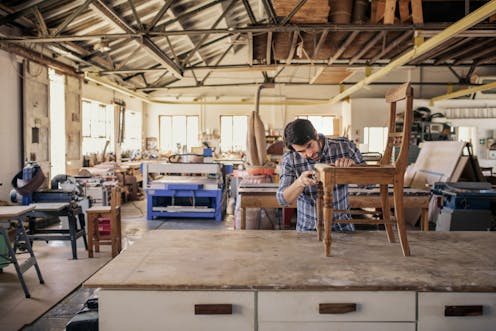
How can a city be socially just, environmentally sustainable and economically robust? And what role can urban industry play? These questions underpin IBA27, an ambitious international building exhibition to be held in the Stuttgart region of Germany in 2027. Ahead of that final showcase stage, designers from all over the world are taking part in multiple planning and architectural projects.
In March 2021, the Frankfurt-based architectural practice, JOTT took first place in one of these projects, a competition to design a new neighbourhood in the town of Winnenden, south Germany. Participants were tasked with drawing up plans for what the organisers termed a productive urban quarter.
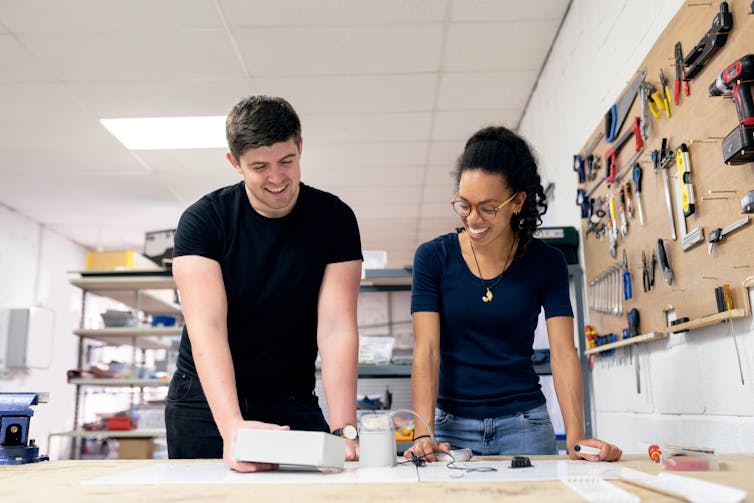
When completed, visitors to JOTT’s new district will find no cars. Instead there will be an array of work spaces – industrial warehouses, a craftsman’s yard and workshops, offices, shared working spaces, laboratories and studios – built into seven mixed-use, high-density blocks with inner courtyards. Around these will be woven public squares, meadows and playgrounds. The plans also include a childcare facility, retail and leisure uses, flats on upper floors and space for urban agriculture on the roofs of buildings. The whole idea is that people who make things for a living should be able to live and thrive there.
The European Union’s key policy document for sustainable urban development, the New Leipzig Charter, advocates precisely for this kind of city: the productive city. It aims to enable and promote new forms of mixed-use development, that go beyond, say, adding a retail shop at the foot of a block of flats.
Research suggests that manufacturing plays an important role in helping urban economies to thrive. For urban planners, accommodating makers – from small-scale specialty food producers to startup tech entrepreneurs – is increasingly important.
Urban manufacturing
Manufacturing in an urban context has been shown to provide comparatively secure and well-paid jobs. It is important in achieving net-zero carbon targets and transitioning to urban circular economies. It reduces delivery kilometres, promotes the use of more sustainable delivery vehicles such as cargo bikes and encourages local repair and reuse centres to be developed. And, research shows, it makes urban spaces more interesting. Because most city dwellers no longer produce things for a living, many seem to relish the opportunity to see how others do it.
Companies have been quick to latch on. Guinness, for example, recently announced plans to open a brewery in central London near Covent Garden, bringing brewing back to an area where beer was first made 300 years ago.
New developments in cities across the globe, from Rotterdam’s mixed-use Makers District to the Makerhoods in Newark, US, echo this trend. It is fuelled by several factors. New production methods such as 3D printing, have made production less polluting and disruptive. Much manufacturing has also moved away from large-scale production, heavy machinery and massive infrastructure towards smaller, bespoke companies. This makes it easier to reintegrate industry into the urban fabric.
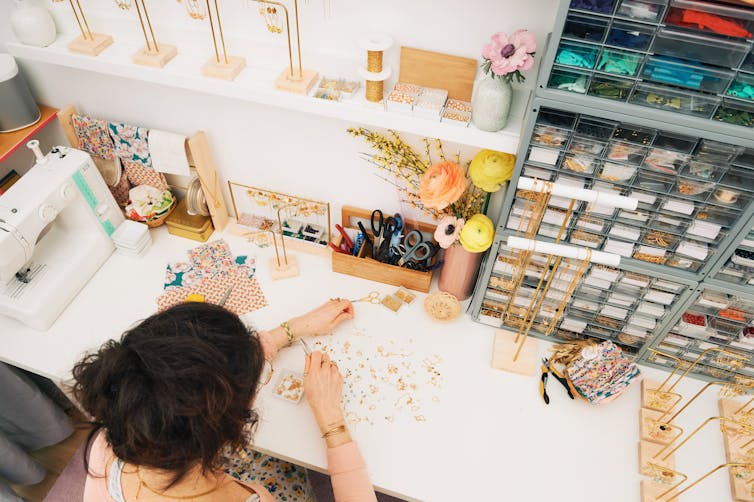
Further, a new generation of urban makers buoyed by the potential of online platforms such as Etsy to sell their wares, has revamped the image of the sector. Consumers, meanwhile, increasingly want local craftsmanship and sustainable, customised products.
Modernist shift
While most cities have been mixed use throughout their history, things changed at the beginning of the 20th century. Modernist urban planning sought to make cities more efficient, rational and hygienic. Concepts including functional segregation and single-use zoning became standard planning doctrines. As a result, most manufacturers were relocated to industrial parks on the outskirts of cities.
If 1960s urbanists came to value diversity in cities as an asset, industry nonetheless continued, quite literally, to be sidelined. Manufacturing was perceived as dirty, dark and dangerous, incompatible with other uses and outdated.
Urban economies shifted away from the production of physical products and towards intangible sources of wealth generation – knowledge industries, culture and services. In New York, blue-collar work and workers began to be portrayed as relics of a bygone era. As a result, manufacturing jobs plummeted from over one million in the 1950s to less than 200,000 in the 2010s.
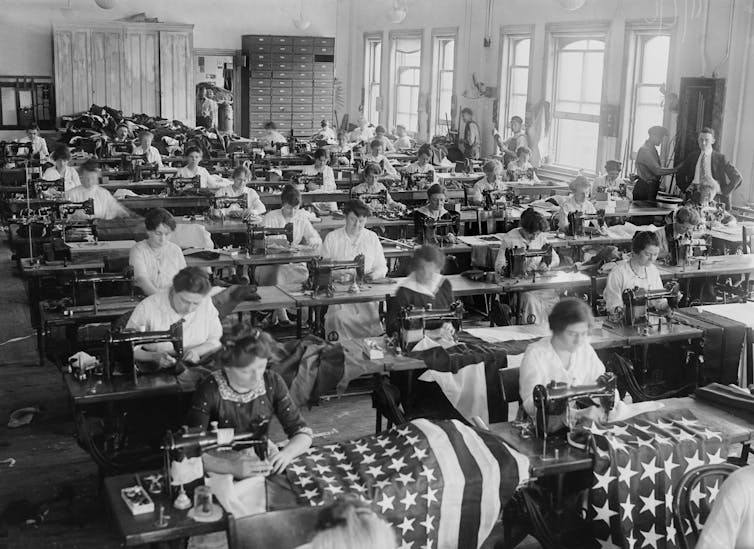
Reversing industrial decline
The idea of the productive city might currently be popular, but reversing these longstanding processes of industrial decline is not easy. In recent years, the city of Brussels has made a name for itself as a local production hub. And yet, industrial production and employment is still falling.
In London, the situation is similar. Urban manufacturing is increasingly talked about and small-scale and artisanal production are on the rise. However, the sector’s overall contribution to the city’s gross value added and total employment is still far from recovering from its decline of recent decades.
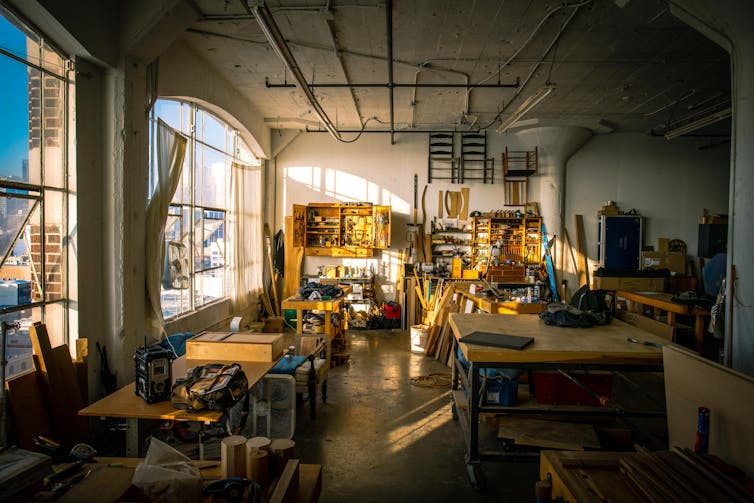
To counter this trend, the revised London Plan – the city’s spatial development strategy – advocates intensifying and densifying existing industrial sites to create additional capacity, as well as mixing them better. While it lacks a citywide strategy to re-industrialise urban spaces, it does suggest stacking uses: allowing flats, say, to be built above industrial space or making rooftops usable for leisure, commerce and green infrastructure.
The UK’s first open-access factory has just opened in north-east London’s Lea Valley with support from Enfield council. This social enterprise, Bloqs, provides 32,000 square feet of workspace and £1.3 million worth of equipment for a wide range of crafts in a converted warehouse. It is part of a multi-billion pound urban regeneration project bringing 10,000 homes and 6,000 jobs to the area.
As with Winnenden’s new neighbourhood, the hope in Enfield is to showcase how urban manufacturing can help a city thrive. But where JOTT’s intervention will be permanent, Bloqs is classified as “meanwhile use”. There is no guarantee the factory will remain a permanent fixture after its current 12-year lease expires. Research suggests that it should: it is precisely the kind of productive space our cities need.
What did you think of this article?
Great | Good | Okay | Weak
Johannes Novy is a member of the Board of Trustees of the International Building Exhibition 2027 StadtRegion Stuttgart (IBA'27), which includes the productive quarter in Winnenden.
This article was originally published on The Conversation. Read the original article.







